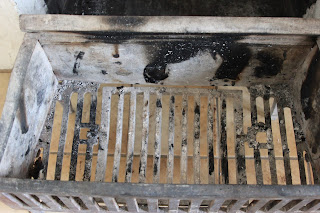Or, at least, I'd like to believe so... A white picket fence for a nearly 100 year old house is fitting. Last September, the old picket fence was removed to make way for extensive concrete work to be completed. Due to the lateness in the season and a quick onset of cold weather, I delayed building the new fence until this Spring.
Lumber, specifically the posts and stringers, was purchased and allowed to dry. Once there was high confidence there wouldn't be any more hard freezes, the sprinkler system was turned back on only to discover a leak under the driveway (I had my suspicions when they repaired it while pouring concrete). The leak was in close proximity to where the gate post would be set, so I'm thankful I kept a watchful eye on this possible issue before beginning.
It took several weeks before I could get the irrigation company to reroute the damaged line, which meant a setback in starting the project. An uncommon rainy Spring resulted in even more delays. But, thankfully, I was, eventually, able to begin.
The fence is one hundred percent Western Red Cedar with all fasteners (aka screws) made of stainless steel. Since Western Red Cedar has natural tannins in the wood, it is important to use fasteners that will not corrode or rust. There was a lot of thought that went into selecting the picket style and I chose, with input with my Wife, to go for something simple and befitting of the simple nature of the house. The gate handle and latch is the same style that would have been used for the era of the house and is almost identical with what was on the picket fence that I absent mindedly let leave the lot last September.
I hand primed every piece of wood twice and sanded everything before assembling the pieces. Then, a solid coat of acrylic latex paint to finish it off. I know I drove my Wife nuts with all the meticulous measuring, thought, and detail I put into the fence. I'm certain she's happy I won't be talking about it, ad nauseum, in the future.
Another project complete!
 |
| Hand Cast by "Coastal Bronze" |
 |
| Latch with gate stop |
 |
| Important for the "non-public" side to look as good as the front side |












